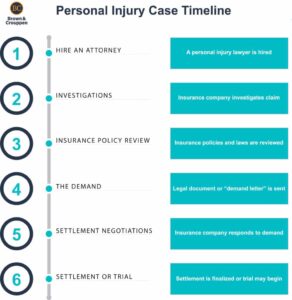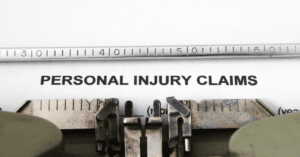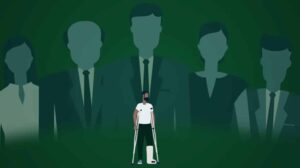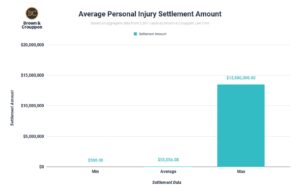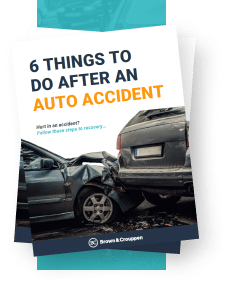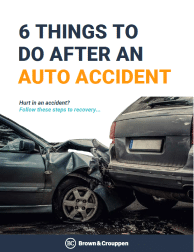

Use our legal checklist to learn what to do after an accident and understand key legal considerations for recovering financial compensation.
Types and Causes of Bus Accidents
Bus accidents can involve various scenarios, including collisions with smaller vehicles like cars, SUVs, or motorcycles; large commercial trucks; other buses; pedestrians; and bicyclists. Additionally, buses can collide with inanimate objects. These accidents frequently occur in school zones, affecting children. Charter bus crashes are also common. Contributing factors can include vehicle defects, driver inattention, or inexperience.
Common Causes of Bus Accidents
Bus accidents occur for many of the same reasons as car accidents. These include:
- Distracted Driving
- Driver Fatigue
- Speeding
- Driving While Intoxicated
- Poor Road Conditions
- Dangerous Road Obstructions
- Mechanical Failure
Due to their higher center of gravity, buses are more prone to rollover accidents as compared to cars. The risk is compounded by the fact that most bus passengers do not wear seatbelts, and buses typically lack airbags. Additionally, passengers in an accident may carry objects that can become projectiles during a rollover, which can increase risk of more severe injuries.
Common Bus Accident Injuries
- Whiplash: Whiplash is a neck injury that occurs when the neck is rapidly and forcefully jerked in one direction and then back again. This can happen in a bus accident when the vehicle stops, jerks, or turns suddenly. The sudden movement can overstretch or sprain the neck’s soft tissues, such as muscles, tendons, and ligaments.
- Strains: Strains occur during bus accidents due to the abrupt impact on the vehicle. Medically, strains refer to injuries affecting the tendons that connect muscles to bones or to the muscle itself. It is common to suffer a lower back injury like a strain in a bus accident. In severe cases, muscles can be torn.
- Traumatic Brain Injury (TBI): A traumatic brain injury is a non-penetrating injury to the brain without any break in the skull. A closed brain injury can result from a rapid forward or backward movement, causing the brain to shake inside the skull, leading to bruising and tearing of brain tissue and blood vessels. Bus accidents can commonly cause such injuries.
- Internal Organ Damage: High-impact collisions in bus accidents can subject the body to extreme forces, leading to ruptures or perforations in internal organs, such as the liver, kidneys, or spleen. Organ damage can cause severe complications, including internal bleeding or organ failure. Commonly damaged organs in bus accidents include the spleen and the abdominal aorta.
- Fatalities: In the most severe bus accidents, fatalities can occur due to the extreme force of the impact and the resulting injuries.
Bus accidents can lead to a wide range of serious injuries, including broken bones, whiplash, strains, traumatic brain injuries, and internal organ damage. In the most severe cases, these accidents can be fatal. Understanding these potential injuries highlights the importance of safety measures and prompt medical attention following a bus accident.
Liability for Bus Accidents
To recover damages following a bus accident, it is necessary to prove that another party was at fault (i.e., legally responsible) for your injuries. Potentially liable parties in bus accidents include:
- The Owner of the Bus
- The Bus Driver
- The Manufacturer of a Defective Bus Component
- A Passenger on the Bus
- Another Driver
Liability is generally established using the legal theory of negligence.
Privately-Owned vs. Publicly-Owned Buses
Filing a lawsuit after a bus accident can be more complex than other motor vehicle accident claims. When a bus driver causes an accident, the injured party typically sues the owner of the bus under the doctrine of respondeat superior.
Many buses are owned by government entities (such as a city or town), which means the injured party may need to sue the government. Generally, under Missouri sovereign immunity laws, government agencies are immune from lawsuits for the negligent acts of their employees. However, Missouri law provides an exception for motor vehicle accidents.
Specifically, Missouri Revised Statute 537.600 allows an injured person to sue a public employee and the government entity that employs them if the employee was operating a motor vehicle as part of their job duties.
Understanding the causes and potential liabilities associated with bus accidents is crucial for seeking compensation. Given the complexities, particularly when government entities are involved, consulting with an experienced attorney can help navigate the legal landscape and ensure the responsible parties are held accountable.
Factors That Impact Bus Accident Settlement Amounts
Severity of Injuries
Physical Injuries: The extent and severity of physical harm suffered by the individual involved in the incident plays a crucial role. This includes broken bones, internal injuries, traumatic brain injuries, spinal cord injuries, and any other bodily harm sustained.
Emotional Trauma: Emotional trauma significantly impacts settlement amounts. This includes psychological distress, anxiety, depression, post-traumatic stress disorder (PTSD), and any other mental health issues resulting from the incident.
Medical Expenses and Future Care Needs
This category encompasses the current and anticipated expenses resulting from the injuries sustained. It includes hospital bills, surgeries, medications, rehabilitation, therapy, and other necessary medical care. Assistance with daily activities or modifications to living arrangements are also considered.
Loss of Income and Earning Capacity
This factor accounts for the financial losses incurred due to the inability to work following the accident. It includes both the immediate loss of income during the recovery period and any long-term impact on earning capacity if the injuries result in permanent disability or limitations that affect the individual’s ability to work and earn a living.
Pain and Suffering
Beyond tangible economic losses, pain and suffering refer to the physical discomfort, emotional distress, and diminished quality of life experienced as a result of the injuries. This subjective aspect of damages is challenging to quantify but is essential in settlement negotiations. It includes the individual’s pain, discomfort, emotional anguish, and other non-economic hardships endured due to the accident.
Settlement Range Based on Injury Severity
The typical range of settlement amounts varies based on the severity of injuries suffered by the plaintiff in personal injury cases. Settlement amounts consider various factors, including the extent of injuries, impact on the individual’s life, liability considerations, and other relevant factors. Settlement amounts can vary widely based on the specifics of each case and may be influenced by jurisdiction, insurance coverage, and the skill of legal representation.
- Minor Injuries: Settlement amounts for cases involving minor injuries generally fall within a lower range compared to more severe injuries. Minor injuries include soft tissue damage, whiplash, sprains, strains, minor cuts, and bruises. Depending on the case’s circumstances, settlements for minor injuries may range from a few thousand dollars to tens of thousands of dollars. These settlements typically cover medical expenses, lost wages, and compensation for pain and suffering.
- Moderate Injuries: Cases involving moderate injuries typically result in higher settlement amounts compared to minor injuries, reflecting the increased severity of the harm suffered. Moderate injuries include concussions and bone fractures. Settlements for moderate injuries may range from tens of thousands to hundreds of thousands of dollars, depending on the case’s specifics. This compensation is intended to cover medical expenses, lost income, rehabilitation costs, and damages for pain and suffering.
- Severe Injuries: Settlement amounts for cases involving severe injuries are often substantial due to the significant impact these injuries have on the individual’s life. Severe injuries include spinal cord injury, disfigurement, paralysis, traumatic brain injury, amputation of limbs, and death. Settlements for severe injuries may range from hundreds of thousands to millions of dollars or more, depending on the severity of the injuries, the long-term effects on the individual’s health and well-being, and other relevant factors. These settlements aim to compensate the plaintiff for medical expenses, ongoing care and treatment, loss of income and earning capacity, permanent disability, disfigurement, and profound pain and suffering endured as a result of the injuries.
The factors influencing settlement amounts in personal injury cases are multifaceted and depend on the severity of injuries, medical expenses, loss of income, pain and suffering, and the specifics of each case. Legal representation can help navigate these factors to ensure a fair settlement.
Example Bus Accident Settlement Amounts
These examples illustrate the wide range of settlement amounts in bus accident cases, reflecting the severity of injuries, negligence involved, and the long-term impact on victims’ lives. Each case is unique, with compensation determined by various factors, including medical expenses, pain and suffering, and lost wages.
- Neck and Back Strains – $5,000: A 45-year-old passenger was traveling on a bus in St. Louis when another bus rear-ended it on a snowy day. The impact resulted in the passenger suffering neck and back muscle strains. The case went to trial, and the jury awarded $5,000 in compensation for the injuries sustained and associated medical treatments.
- Lower Back and Shoulder Injuries – $18,000: A 22-year-old woman was a passenger on a bus in St. Louis when the bus collided with an emergency vehicle. The collision occurred because neither the bus driver nor the emergency vehicle driver yielded or kept a proper lookout. During the impact, the woman was thrown from her seat, injuring her lower back and shoulder as she struck the back of a seat and the passenger next to her fell on her shoulder. The jury awarded her $18,000 for her injuries, pain, and suffering.
- Multiple Injuries – $50,000: A male passenger on a bus in St. Louis sustained head, neck, back, and knee injuries during a collision involving another vehicle. The plaintiff alleged that both the bus driver and the driver of the other vehicle were negligent in their driving, which caused the accident. He sought compensation for his injuries, as well as for past and future medical expenses. After evaluating the case, a jury awarded him $50,000.
- School Bus Accident Settlement – $156,000: A minor was a passenger on a school bus involved in a motor vehicle accident. As a result of the collision, the minor sustained injuries. The minor’s family reached a settlement with the bus company regarding the personal injury claim, resulting in a settlement amount of $156,000 to cover medical expenses and pain and suffering.
- Severe Injuries to Child – $400,500: A 6-year-old male bus passenger suffered sprains, bruises, and other injuries when the bus driver failed to yield the right of way at an intersection and struck a car. The bus, which was carrying ten elementary school children, overturned. It was found that the transportation company negligently entrusted the bus to a driver whose license had been previously suspended for driving while intoxicated. The jury awarded $400,500 to the plaintiff for the severe injuries and the negligence involved.
- Catastrophic Injuries – $2,500,000: A 13-year-old passenger was traveling on a school bus on an interstate highway when the defendant’s vehicle, traveling in the opposite direction, veered across the center line and collided with the bus. The plaintiff was thrown from the bus and landed on his head, resulting in an intracranial hemorrhage, a compound fracture of the left femur, and multiple facial lacerations. The plaintiff remained in a coma for ten days. The defendant driver was killed in the accident. The case was settled for $2.5 million to compensate for the extensive injuries and long-term impact on the plaintiff’s life.
- Greyhound Bus Collision – $5,050,000: A jury awarded $5.05 million to four passengers who were injured when a Greyhound bus collided with a tractor-trailer on an interstate. The jury determined that the bus driver was negligent and reckless in operating the bus, which led to the collision. Following a six-week trial, the jury awarded the plaintiffs $3.05 million in compensatory damages and $2 million in punitive damages against Greyhound for their negligence and misconduct
What To Do if You Are Involved in a Bus Accident
- Ensure Safety: Your immediate priority should be the safety of yourself and others involved in the accident. If possible, move to a secure location away from traffic and any potential hazards to prevent further injuries.
- Call Emergency Services: Dial 911 to report the accident and request medical assistance if necessary. Provide accurate information about the location and nature of the accident to ensure a prompt response from emergency services.
- Seek Medical Attention: Assess yourself and others for injuries. If anyone requires immediate medical attention, inform the emergency services dispatcher. Even if your injuries appear minor, it is advisable to seek a medical evaluation, as some injuries may not be immediately apparent.
- Gather Information: Collect essential information related to the accident. This includes the bus driver’s name and contact details, the bus company’s name and contact information, and the license plate numbers of the vehicles involved. If there are witnesses, obtain their names and contact information as well.
- Document the Scene: Take photographs and videos of the accident scene, capturing the positions of the vehicles, the damage sustained, and any other relevant details. These visual records can serve as valuable evidence during the claims process.
- Preserve Evidence: Preserve any physical evidence related to the accident, such as damaged personal property or torn clothing. Additionally, keep records of medical reports, hospital bills, and other relevant documents for future reference.
- Consult with a Personal Injury Attorney: If you have suffered injuries or significant damages in the bus accident, it is prudent to consult with a personal injury attorney who specializes in bus accidents. They can guide you through the legal process, protect your rights, and help you pursue potential claims for compensation.
Taking these steps can help ensure your safety and strengthen your position should you need to pursue a legal claim for compensation for damages sustained in a bus accident.
How Long Do I Have To File a Bus Accident Lawsuit in Missouri?
In Missouri, the statute of limitations for filing a lawsuit relating to bus accidents is five years, as specified in Missouri Revised Statute 516.120. This means that individuals have a five-year period starting from the date of the bus accident to initiate legal proceedings. Given the complexities and potential difficulties involved in navigating personal injury claims, it is highly recommended that individuals involved in a bus accident seek legal counsel as soon as possible.
If you have incurred medical bills and other expenses as a result of the bus accident, your attorney will work to include these costs in your personal injury claim. This can help ensure that you are reimbursed for medical treatment, rehabilitation, lost wages, and any other financial burdens resulting from the accident. While Missouri law provides a five-year window to file a lawsuit after a bus accident, it is in your best interest to act promptly. Engaging an attorney early in the process can significantly enhance your ability to secure fair compensation and cover the expenses arising from the accident.
How an Attorney Can Help You Recover More Compensation
In the pursuit of rightful compensation post-injury or accident, grappling with legal intricacies can be a tough task. Often, insurance companies are restrained in offering assistance, necessitating expert legal guidance. At our firm, we extend a complimentary case evaluation service to provide clarity on the viability of your personal injury claim and develop strategic steps toward a successful resolution.
In cases concerning bus accidents, liability may be attributed to either the bus operator or another driver. Our adept legal team at Brown & Crouppen specializes in meticulous evidence gathering and investigation to furnish informed legal counsel tailored to your unique circumstances. Our assistance in personal injury cases encompasses several stages:
- Free Consultation: At the outset, our attorneys gather pertinent details surrounding the accident and resulting injuries to assess the case’s strength accurately.
- Information Compilation: We meticulously compile essential information, including medical records, police reports, visual evidence, and witness testimonies, to construct a comprehensive case file.
- Expert Consultation: Leveraging insights from medical professionals and accident reconstruction experts, we ascertain the severity of injuries, liability, and potential avenues for redressal, ensuring a well-informed legal strategy.
- Legal Research: Our team conducts exhaustive legal research to grasp pertinent laws and regulations, empowering us to bolster our client’s case with robust legal arguments grounded in jurisprudence.
- Document Drafting: Crafting essential legal documents, such as demand letters and complaints, forms a pivotal aspect of our representation, ensuring clarity and precision in legal proceedings.
- Negotiation: Engaging in negotiations with insurance companies on behalf of our clients, we advocate for fair compensation for injuries and damages, leveraging our negotiation prowess to secure optimal outcomes.
- Litigation: In the event negotiations prove unfruitful, we proceed with filing a lawsuit, navigating procedural requirements with precision to initiate formal legal proceedings aimed at obtaining just compensation.
- Mediation or Trial: Depending on the case’s progression, we may seek resolution through mediation or advocate before a judge or jury in trial proceedings, ensuring our clients’ interests are vigorously defended at every stage.
- Settlement Execution: Facilitating the collection and distribution of settlements or judgments obtained, we ensure equitable distribution of proceeds, deducting legal fees and expenses incurred while prioritizing our client’s financial interests.
Moreover, our fee structure operates on a contingency basis, meaning our compensation is contingent upon the successful resolution of your case. Thus, you can pursue legal recourse without bearing any upfront financial burden, providing peace of mind and accessibility to quality legal representation.
With Brown & Crouppen by your side, you can navigate the complexities of personal injury litigation with confidence, knowing that your rights and interests are safeguarded by a dedicated team of legal professionals. Our Kansas City and St. Louis bus accident attorneys can help you recover the compensation you deserve.
Get Help With Your Case From Brown & Crouppen
Our personal injury firm is one of the highest-rated law firms in the Midwest. At Brown & Crouppen, all of our bus accident attorneys share the same goal – to get justice for people who have been injured. If you or a loved one has suffered injuries from a bus accident, get help from a lawyer at Brown & Crouppen Law Firm.
Getting started with your car accident case is easy. Call us at 888-803-2581 for a free consultation or tell us about your case with our free case review form. And remember, there’s no upfront cost to you – if you don’t get paid, we don’t get paid.

